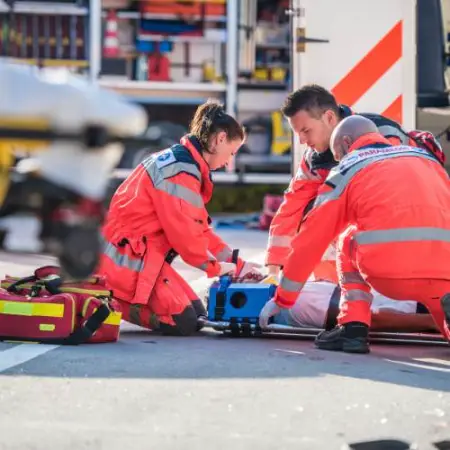Training and Assessment Delivered on Behalf of Allens Training Pty Ltd RTO 90909
5 Situations When You Do Not Perform CPR

A common query echoing through our first aid courses is, “Are there specific situations when you do not perform CPR?” It’s a vital question, and today, we’ll dive deep into those scenarios, giving you clarity on when to hold back. Here’s the 5 situations when you do not perform CPR.
1. Recognizing the Undeniable Fatal Signs:
In extreme situations, where you encounter someone with evident signs like decapitation or a decomposing body, CPR isn’t the solution. While the sight might be distressing, your immediate responsibility is to ensure the scene is safe and alert the emergency services.

2. Safety First: It’s All About Context:
Think about it – would you attempt CPR amidst a busy freeway or in the proximity of a raging fire? Your safety, and that of the person in need, comes first. Situations like an approaching train, or a room filled with hazardous gases, require immediate safety measures before considering CPR.
3. If they are responsive:
Do you remember your DRSABCD steps from our ultimate guide? The ‘R’ stands for Response. Before you even think about compressions, you need to assess if the person is responsive. Maybe they’re not chatting about weekend plans, but are they showing signs of consciousness? If so you wouldn’t need to give CPR.
What if they are unresponsive? The ‘A’ for Airway and ‘B’ for Breathing come into play. It’s crucial to ensure they have a clear airway and check their breathing pattern. If these signs are positive, CPR isn’t required. Your goal becomes to keep them stable and await professional help.
4. Navigating the Terrain of Mass Casualties:
Multiple casualties can create chaotic scenes, demanding quick judgments. If you’re faced with someone who is conscious but bleeding extensively, and another person who seems unresponsive, your immediate focus might be to control the bleeding. There’s a greater likelihood of saving a life by addressing imminent threats first.
5. Medical Professionals Taking Charge:

When there’s a doctor or nurse on the scene, their guidance becomes paramount. However, it’s essential to be aware that even these experts may differ in their approach based on their experience or specialty. If they advise against CPR, or suggest a different approach, it’s crucial to collaborate and follow their lead, ensuring the best possible care for the individual in distress.
To fully understand these situations and the broader context of first aid, exploring our in-depth DRSABCD guide will prove invaluable. Dive into the nuances and become the emergency responder every situation needs.

